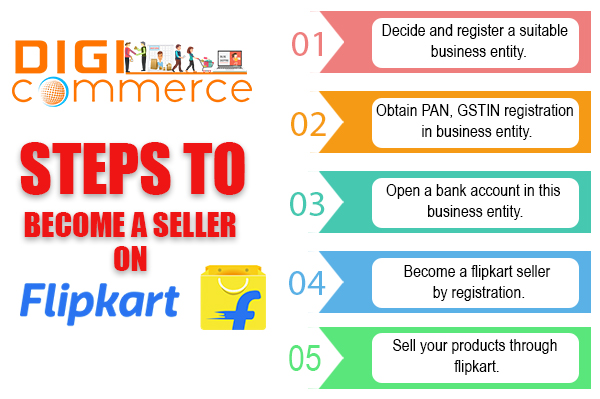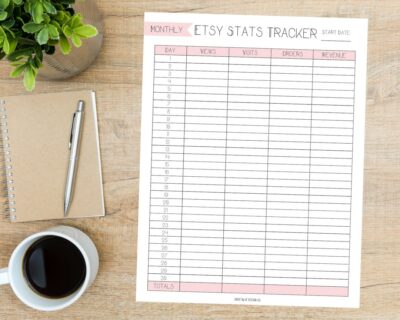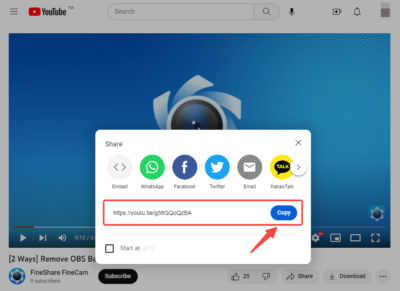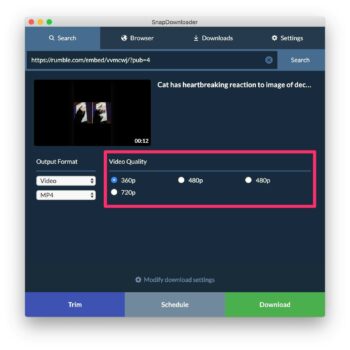Welcome to the exciting world of e-commerce with Flipkart! If you've ever considered expanding your business by reaching a broader audience, becoming a seller on Flipkart is a fantastic opportunity. In this comprehensive guide, we'll delve into the details of the seller sign-up process, providing you with the knowledge and steps needed to kickstart your journey on one of India's leading online marketplaces.
Why Flipkart?
Before we dive into the nitty-gritty of seller sign-up, let's explore why choosing Flipkart is a strategic move. Flipkart boasts a vast customer base, providing sellers with a substantial platform to showcase and sell their products. The user-friendly interface, robust logistics, and extensive marketing reach make Flipkart an attractive choice for both established businesses and budding entrepreneurs.
Benefits of Selling on Flipkart:
- Large Customer Base: Gain access to millions of potential customers across India.
- Marketing and Promotion: Leverage Flipkart's marketing initiatives to boost the visibility of your products.
- Logistics Support: Enjoy hassle-free order fulfillment with Flipkart's reliable logistics services.
- Secure Payments: Ensure seamless and secure transactions with Flipkart's trusted payment gateway.
What to Expect in This Guide:
This guide will be your go-to resource for understanding the entire seller sign-up process on Flipkart. We'll cover the prerequisites for becoming a seller, provide a step-by-step guide to the registration process, offer tips for optimizing your seller profile, and guide you on effectively managing your Flipkart seller dashboard.
Whether you're a seasoned business owner or a newcomer to the world of e-commerce, this guide aims to simplify the seller sign-up journey, ensuring you make the most out of your experience on Flipkart. Let's embark on this exciting venture together!
2. Why Sell on Flipkart?
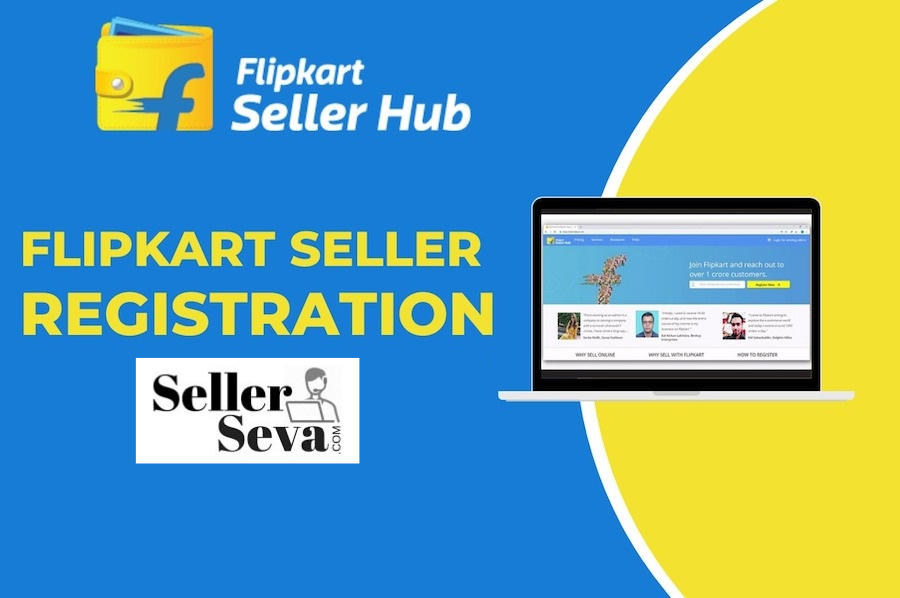
Choosing the right online marketplace is crucial for the success of your e-commerce venture, and Flipkart offers a multitude of advantages that make it a preferred platform for sellers. Let's explore the compelling reasons why you should consider selling on Flipkart:
1. Massive Customer Base:
Flipkart boasts a vast and diverse customer base, providing sellers with an extensive reach. By joining Flipkart, you tap into a pool of millions of potential customers, significantly expanding your market presence.
2. Brand Visibility and Recognition:
Being part of Flipkart allows your brand to benefit from increased visibility and recognition. The platform's robust marketing strategies and promotional campaigns can elevate your products, making them more visible to a broader audience.
3. Trusted Platform:
Flipkart has established itself as a trusted and reliable e-commerce platform in India. Customers associate the platform with quality products and secure transactions, instilling confidence in their purchasing decisions.
4. Logistics and Fulfillment Support:
One of the challenges in online selling is efficient order fulfillment. Flipkart addresses this concern by offering reliable logistics support. Sellers can leverage Flipkart's extensive delivery network for timely and secure product shipments.
5. Secure Payment Gateway:
Flipkart ensures secure transactions through its trusted payment gateway. This not only provides a seamless shopping experience for customers but also builds trust, encouraging repeat business.
6. Marketing Opportunities:
Flipkart invests in various marketing initiatives to promote sellers and their products. Participating in these initiatives can significantly enhance your product's visibility, leading to increased sales and brand recognition.
7. Customer Reviews and Feedback:
Customer reviews play a vital role in influencing purchase decisions. Flipkart's platform encourages customers to leave reviews, providing valuable feedback that can help you improve your products and services.
By choosing to sell on Flipkart, you position your business in front of a vast audience, benefit from a trusted and secure platform, and gain access to the support and resources needed for successful online selling.
Also Read This: Download Song from Telegram and Listen to It Offline With This Method
3. Requirements for Seller Sign-Up
Before embarking on your journey as a seller on Flipkart, it's essential to ensure that you meet the platform's requirements for a seamless sign-up process. Below are the key prerequisites to kickstart your seller registration:
1. Legal Entity:
Flipkart requires sellers to operate as a legal entity, which can be a sole proprietorship, partnership, or private limited company. Ensure that your business is legally registered and has the necessary documentation.
2. GST Registration:
Goods and Services Tax (GST) registration is mandatory for sellers on Flipkart. Ensure that your business is GST compliant, and you possess a valid GSTIN (GST Identification Number).
3. Bank Account:
Have an active bank account in the name of your registered business entity. This account will be used for receiving payments from Flipkart for the products you sell on the platform.
4. PAN Card:
Provide a valid Permanent Account Number (PAN) card for your business. This is a crucial identification document required for financial transactions and taxation purposes.
5. Business Email and Phone Number:
Ensure that you have a dedicated business email address and phone number for communication with Flipkart. These contact details will be used for official correspondence and notifications.
6. Warehouse or Fulfillment Center:
If you have your warehouse or fulfillment center, it's a plus point. Having control over your inventory management and order fulfillment process can contribute to a smoother selling experience.
7. Product Information:
Prepare detailed information about the products you intend to sell, including images, descriptions, and pricing. Accurate and appealing product listings enhance your chances of attracting customers.
8. Business Documents:
Be ready to submit essential business documents, such as the business registration certificate, GST certificate, and PAN card, during the registration process. Ensure that these documents are up-to-date and valid.
9. Compliance with Flipkart Policies:
Familiarize yourself with Flipkart's seller policies and guidelines. Ensure that your business operations align with these policies to prevent any issues during the registration and selling process.
By ensuring that you meet these requirements, you pave the way for a smooth and successful seller sign-up on Flipkart. Take the time to gather and organize the necessary documents to streamline the registration process and set the foundation for a thriving online business on Flipkart.
Also Read This: The Insider Guide About If Instagram Notify When You Save a Video from DM
4. Step-by-Step Guide to Seller Registration
Now that you've ensured you meet all the requirements, let's dive into the step-by-step process of registering as a seller on Flipkart. Follow these detailed instructions to navigate through the registration seamlessly:
1. Visit Flipkart Seller Registration Page:
Start by accessing the Flipkart Seller Registration page. If you don't have an existing Flipkart account, you'll need to create one. Provide your email address and create a secure password to initiate the process.
2. Basic Information:
Enter your basic information, including your business name, type of legal entity, and business address. Ensure accuracy, as this information will be used for official communication and order fulfillment.
3. GST Details:
Submit your Goods and Services Tax (GST) details, including your GSTIN. Verify that the information aligns with your GST registration certificate to facilitate smooth transactions on the platform.
4. Bank Account Verification:
Provide details of the bank account associated with your business. Flipkart will use this account for transferring payments for the products you sell. Ensure accuracy to prevent payment-related issues.
5. KYC Documents:
Upload the necessary Know Your Customer (KYC) documents, including your PAN card and business registration certificate. Ensure that the documents are clear, valid, and comply with Flipkart's verification standards.
6. Category and Product Information:
Select the category of products you intend to sell on Flipkart. Provide detailed information about your products, including high-quality images, accurate descriptions, and competitive pricing.
7. Set Up Your Store:
Customize your seller profile by adding relevant details about your business, including a logo, banner, and store policies. A well-curated store enhances your brand image and attracts potential customers.
8. Agreement and Verification:
Review the seller agreement provided by Flipkart. Once satisfied, digitally sign the agreement to confirm your commitment to adhere to Flipkart's policies. Complete any additional verification steps required by the platform.
9. Start Selling:
Congratulations! Your seller registration on Flipkart is complete. Begin listing your products, set competitive prices, and take advantage of the platform's features to boost your visibility and sales.
Important Tips:
- Regularly update your product listings to keep them relevant and engaging.
- Monitor customer reviews and address any issues promptly to maintain a positive seller rating.
- Utilize Flipkart's marketing tools and promotions to enhance product visibility.
By following this step-by-step guide and incorporating the provided tips, you'll be well on your way to a successful journey as a seller on Flipkart. Embrace the opportunities the platform offers and continuously optimize your strategies for long-term success.
Also Read This: Here’s How to Create Download Link for a Video Online
4.1 Creating a Flipkart Seller Account
Creating a Flipkart Seller Account is the first crucial step towards establishing your online presence on one of India's leading e-commerce platforms. Follow this detailed guide to successfully set up your Flipkart Seller Account:
1. Access the Flipkart Seller Registration Page:
Visit the official Flipkart Seller Registration page to initiate the account creation process. If you don't have an existing Flipkart account, you'll need to sign up with a valid email address and create a secure password.
2. Provide Basic Information:
Enter essential details about your business, including the business name, legal entity type, and business address. Ensure accuracy in this information, as it will be used for official communication and order fulfillment.
3. Verify Email Address:
After providing your basic information, a verification email will be sent to the provided email address. Click on the verification link in the email to confirm and activate your Flipkart Seller Account.
4. Set Password and Security:
Choose a strong and secure password for your Flipkart Seller Account. Additionally, set up any required security features, such as two-factor authentication, to enhance the protection of your account.
5. Access Seller Dashboard:
Once your account is activated, you'll gain access to the Flipkart Seller Dashboard. This dashboard serves as the central hub for managing your products, orders, and overall performance on the platform.
6. Navigate to Seller Registration Section:
Within the Seller Dashboard, locate the Seller Registration section. Here, you'll find the detailed steps and requirements needed to complete the registration process and start selling on Flipkart.
7. Provide Business Details:
Complete the required fields with accurate information about your business. This includes your Goods and Services Tax Identification Number (GSTIN), legal entity details, and other relevant business information.
8. Bank Account Information:
Enter the details of the bank account associated with your business. This is crucial for receiving payments from Flipkart for the products you sell on the platform. Verify the accuracy of the provided information.
9. Upload KYC Documents:
Upload the necessary Know Your Customer (KYC) documents, including your PAN card and business registration certificate. Ensure that these documents are clear, valid, and comply with Flipkart's verification standards.
10. Accept Seller Agreement:
Review the terms and conditions outlined in the Flipkart Seller Agreement. If satisfied, digitally sign the agreement to confirm your commitment to adhere to Flipkart's policies and guidelines.
By following these steps, you'll successfully create your Flipkart Seller Account and lay the foundation for a fruitful selling experience on the platform. Remember to stay engaged with your Seller Dashboard for ongoing management and optimization of your online store.
Also Read This: How to Download a Comics in Bilibili Comics – Easy Way
4.2 Providing Business Information
After creating your Flipkart Seller Account, the next crucial step is to provide detailed business information. This information not only establishes the credibility of your online store but also ensures a smooth and transparent interaction with customers. Follow these steps to effectively provide business information on Flipkart:
1. Access Seller Dashboard:
Log in to your Flipkart Seller Account and navigate to the Seller Dashboard. This is your central hub for managing various aspects of your online business, including business information.
2. Locate Business Information Section:
Within the Seller Dashboard, find the designated section for business information. This is where you'll input essential details that will be visible to customers browsing your products.
3. Verify and Update Contact Information:
Ensure that your contact information, including your business email address and phone number, is accurate and up-to-date. This information is crucial for customer communication and order-related queries.
4. Add Business Address:
Enter your business address, including the complete postal address. This information is vital for shipping and order fulfillment. Customers rely on accurate address details to receive their purchases without any issues.
5. Logo and Banner:
Enhance the visual appeal of your online store by uploading your business logo and a banner. A well-designed logo and banner create a professional and memorable brand image, making your store stand out to potential customers.
6. About Us Section:
Utilize the "About Us" section to provide a brief yet compelling description of your business. Highlight your brand story, values, and mission. This section allows customers to connect with your brand on a personal level.
7. Return and Refund Policies:
Clearly outline your return and refund policies. Be transparent about the conditions under which customers can return products and the procedures for processing refunds. Clarity in policies builds trust with your customers.
8. Store Policies:
Specify any additional store policies, such as shipping timelines, warranty information, or special terms and conditions. Clearly communicate what customers can expect when shopping from your store.
9. Social Media Links:
Link your social media profiles to your Flipkart Seller Account. This provides customers with additional avenues to connect with your brand and stay updated on your latest products and promotions.
10. Save and Review:
Once you've input all the necessary information, save your changes and review your business profile. Ensure that all details are accurate and reflect the professionalism and reliability of your online store.
By meticulously providing business information, you not only build trust with potential customers but also create a positive shopping experience. A well-detailed business profile contributes to the overall success of your Flipkart store by establishing a strong online presence and fostering customer loyalty.
Also Read This: How to Get More Likes on EyeEm: 10 Proven Strategies
4.3 Verification Process
Once you've provided your business information on Flipkart, the platform initiates a verification process to ensure the authenticity and reliability of your online store. This verification step is crucial for building trust with customers and maintaining the integrity of the Flipkart marketplace. Here's a detailed overview of the verification process:
1. Initial Review:
After submitting your business information, Flipkart's team conducts an initial review of the details provided. This review includes checking the accuracy of your contact information, business address, and other essential details.
2. KYC Document Verification:
Flipkart requires sellers to upload Know Your Customer (KYC) documents during the registration process. These documents, including your PAN card and business registration certificate, undergo thorough verification to ensure compliance with Flipkart's standards.
3. Verification Timeline:
The verification process typically takes a certain amount of time, and the duration may vary. Flipkart aims to complete the verification promptly, but sellers should be prepared for potential timelines as specified by the platform.
4. Communication:
Throughout the verification process, Flipkart maintains communication with the seller. You may receive notifications or updates regarding the status of your verification. It's essential to monitor your Flipkart Seller Dashboard and email for any messages from the platform.
5. Additional Information:
In some cases, Flipkart may request additional information or clarification during the verification process. This could include additional documents or details to ensure a comprehensive understanding of your business operations.
6. Verification Success:
Upon successful completion of the verification process, you will receive confirmation from Flipkart. This means that your online store is now verified and eligible to start selling on the platform. You can proceed to list your products and engage with customers confidently.
7. Addressing Verification Issues:
If any issues arise during the verification process, Flipkart will provide guidance on addressing them. This may involve rectifying discrepancies in provided information or submitting additional documents for clarification.
8. Continuous Compliance:
It's important for sellers to maintain continuous compliance with Flipkart's policies and guidelines. Regularly update your business information and promptly address any issues flagged by the platform to ensure a smooth and uninterrupted selling experience.
Important Note:
Verification is an ongoing process, and sellers should be proactive in addressing any changes or updates required by Flipkart. Adhering to the platform's standards ensures a positive relationship with customers and sustained success as a Flipkart seller.
Also Read This: Download Movies from IMDB Free for Windows with This High-Quality Tool
4.4 Setting Up Your Seller Profile
Setting up a compelling seller profile on Flipkart is a crucial step to make a positive impression on potential customers and maximize your sales potential. Your seller profile serves as a digital storefront, and an appealing and well-organized profile can significantly impact your success on the platform. Follow these steps to effectively set up your Flipkart seller profile:
1. Navigate to Seller Dashboard:
Log in to your Flipkart Seller Account and access the Seller Dashboard. Look for the section dedicated to managing your seller profile.
2. Profile Information:
Input detailed and accurate information about your business in the profile section. Include your business name, address, contact details, and any other relevant information that enhances the credibility of your online store.
3. Logo and Banner:
Upload your business logo and a visually appealing banner. A well-designed logo contributes to brand recognition, while an attractive banner creates an inviting storefront for potential customers.
4. Store Policies:
Clearly outline your store policies, including shipping timelines, return policies, and any other terms and conditions. Transparent and customer-friendly policies build trust and encourage potential buyers to make a purchase.
5. Product Categories:
Select and categorize your products appropriately. This helps customers easily navigate your store and find the products they are interested in. Accurate categorization enhances the overall shopping experience.
6. Highlight Bestselling Products:
If you have bestselling or featured products, consider showcasing them prominently on your seller profile. This can capture the attention of visitors and increase the chances of generating sales.
7. About Us Section:
Use the "About Us" section to tell your brand story. Share information about your business values, mission, and what sets your products apart. A compelling narrative can create a personal connection with potential customers.
8. Social Media Integration:
Link your social media profiles to your Flipkart seller profile. This provides customers with additional channels to connect with your brand and stay updated on your latest products, promotions, and announcements.
9. Customer Reviews:
Encourage positive customer reviews by delivering exceptional products and service. Positive reviews not only contribute to your seller rating but also serve as social proof, influencing potential buyers to trust your brand.
10. Regular Updates:
Periodically review and update your seller profile. Keep information current, especially if there are changes in your business, policies, or product offerings. A well-maintained profile reflects a dynamic and reliable business.
By investing time in setting up a comprehensive seller profile, you enhance your brand's visibility and attractiveness to potential customers. A thoughtfully curated profile contributes to a positive customer experience, fostering loyalty and repeat business on the Flipkart platform.
Also Read This: Design Dollars: How to Sell Cricut Designs on Etsy
5. Tips for a Successful Seller Profile
Creating a successful seller profile on Flipkart goes beyond basic information input. It requires a strategic approach to showcase your brand effectively and build trust with potential customers. Here are valuable tips to ensure your seller profile stands out and contributes to your success on the platform:
1. High-Quality Product Images:
Include clear and high-quality images of your products. High-resolution images provide customers with a better understanding of your offerings, increasing the likelihood of making a purchase.
2. Detailed Product Descriptions:
Accurate and detailed product descriptions are crucial. Clearly articulate the features, specifications, and benefits of your products. Highlight unique selling points to make your products more enticing.
3. Competitive Pricing:
Conduct market research to ensure your pricing is competitive. Offering competitive prices can attract budget-conscious shoppers and enhance the perceived value of your products.
4. Bundle Deals and Discounts:
Create bundle deals or offer discounts on certain products. This can encourage customers to purchase more items from your store and increase the average order value.
5. Prompt Customer Service:
Provide prompt and helpful customer service. Respond to customer inquiries and address any issues or concerns promptly. Positive interactions contribute to a positive seller rating.
6. Regularly Update Inventory:
Keep your product listings and inventory up-to-date. Remove any out-of-stock items promptly and introduce new products to keep your store fresh and engaging.
7. Utilize Flipkart's Marketing Tools:
Take advantage of Flipkart's marketing tools and promotional features. Participate in Flipkart campaigns, discounts, and special events to boost the visibility of your products.
8. Monitor Customer Reviews:
Regularly check and respond to customer reviews. Address any negative feedback professionally and use positive reviews as testimonials to showcase the satisfaction of your customers.
9. Optimize for Mobile:
Ensure that your seller profile and product listings are optimized for mobile devices. Many customers browse and shop on Flipkart using smartphones, so a mobile-friendly experience is essential.
10. Implement SEO Best Practices:
Incorporate relevant keywords in your product titles and descriptions to improve search visibility. Use descriptive and enticing language to attract potential customers through organic searches.
11. Secure Packaging and Timely Shipping:
Invest in secure packaging to protect products during transit. Ensure timely shipping to meet customer expectations. Reliable shipping and safe packaging contribute to positive reviews and repeat business.
12. Showcase Trust Badges and Certifications:
If applicable, display any trust badges, certifications, or awards your business has received. This adds credibility to your brand and reassures customers about the quality of your products and services.
Implementing these tips will not only enhance your seller profile on Flipkart but also contribute to a positive overall selling experience. Consistently delivering value to customers and optimizing your profile will set the stage for long-term success on the platform.
Also Read This: Free Bilibili Video Download Tool That Lets You Enhance Your Offline Viewing Experience
6. Managing Your Flipkart Seller Dashboard
Effectively managing your Flipkart Seller Dashboard is essential for staying organized, optimizing your operations, and ensuring a successful selling experience on the platform. Here's a comprehensive guide on how to navigate and make the most of your Seller Dashboard:
1. Overview Section:
Upon logging into your account, the dashboard provides an overview of key metrics such as sales, order fulfillment status, and customer reviews. Utilize this section to quickly assess your store's performance at a glance.
2. Orders and Returns:
Monitor incoming orders and keep track of return requests in the Orders and Returns section. Process orders promptly, update order status, and manage returns efficiently to maintain customer satisfaction.
3. Inventory Management:
Regularly update your product inventory to reflect accurate stock levels. Use the Inventory Management tools to add new products, modify existing listings, and ensure that your product catalog is up-to-date.
4. Performance Metrics:
Review performance metrics, including your seller rating, customer feedback, and sales trends. Identify areas for improvement and implement strategies to enhance your overall performance on Flipkart.
5. Marketing and Promotions:
Explore Flipkart's marketing and promotional tools available in your Seller Dashboard. Participate in promotional events, create discounts, and leverage marketing campaigns to increase the visibility of your products.
6. Financial Dashboard:
Access the Financial Dashboard to track your earnings, view transaction details, and monitor payment settlements. Stay informed about the financial aspects of your business to ensure accurate bookkeeping.
7. Customer Reviews and Feedback:
Regularly check and respond to customer reviews. Positive engagement with customers enhances your seller rating, while addressing concerns promptly demonstrates your commitment to customer satisfaction.
8. Customer Service and Support:
Use the customer service and support features in your Seller Dashboard to address customer inquiries and issues. Providing excellent customer service contributes to positive reviews and repeat business.
9. Notifications and Alerts:
Stay on top of important notifications and alerts from Flipkart. These notifications may include policy updates, promotional opportunities, or alerts about specific orders that require attention.
10. Reports and Analytics:
Utilize the Reports and Analytics section to generate detailed reports on your sales, customer behavior, and product performance. Analyzing these reports can help you make data-driven decisions to optimize your strategies.
11. Seller Support:
If you encounter any challenges or have questions, reach out to Flipkart's seller support through the designated section in your Seller Dashboard. Timely and efficient communication with support can resolve issues and ensure a smooth selling experience.
12. Stay Informed:
Regularly check for updates, announcements, and new features in your Seller Dashboard. Staying informed about platform changes allows you to adapt your strategies and take advantage of new opportunities.
Effectively managing your Flipkart Seller Dashboard is key to building a successful online business. By staying organized, addressing customer needs, and leveraging the tools available, you can optimize your selling experience on Flipkart and contribute to the growth of your e-commerce venture.
Also Read This: Building a Sex Room: IMDb and the Plot Unveiled
7. Frequently Asked Questions (FAQ)
Here are answers to some common questions that sellers may have when navigating the Flipkart platform and managing their online store:
Q1: How do I become a seller on Flipkart?
A: To become a seller on Flipkart, visit the Flipkart Seller Registration page, create an account, and follow the step-by-step registration process. Ensure you meet all the requirements, including legal entity registration, GST, and necessary documentation.
Q2: What are the key requirements for seller sign-up?
A: Sellers need to fulfill requirements such as legal entity registration, GST registration, a valid bank account, PAN card, business email and phone number, and compliance with Flipkart's policies. Having a warehouse or fulfillment center is advantageous.
Q3: How long does the verification process take?
A: The verification process duration can vary. Flipkart aims to complete it promptly, but sellers should be prepared for potential timelines specified by the platform. Regularly check your dashboard and email for updates.
Q4: What information should I include in my seller profile?
A: Include accurate business information, a professional logo, an attractive banner, clear return and refund policies, and a compelling "About Us" section. Link your social media profiles for additional brand visibility.
Q5: How can I optimize my product listings?
A: Optimize product listings with high-quality images, detailed descriptions, and competitive pricing. Use relevant keywords for improved search visibility. Regularly update your inventory and highlight bestselling products.
Q6: What marketing tools does Flipkart offer for sellers?
A: Flipkart provides various marketing tools and promotional features. Sellers can participate in campaigns, create discounts, and leverage marketing events to enhance the visibility of their products and attract more customers.
Q7: How can I track my earnings and view transaction details?
A: Access the Financial Dashboard in your Seller Dashboard to track earnings, view transaction details, and monitor payment settlements. This section provides insights into the financial aspects of your business.
Q8: What is the importance of customer reviews and feedback?
A: Customer reviews and feedback play a crucial role in building trust with potential buyers. Positive reviews contribute to a higher seller rating, while addressing concerns promptly demonstrates a commitment to customer satisfaction.
Q9: How can I contact Flipkart's seller support?
A: Sellers can reach out to Flipkart's seller support through the designated section in their Seller Dashboard. Efficient communication with support can help resolve issues and ensure a smooth selling experience.
Q10: What reports and analytics are available for sellers?
A: Flipkart provides a Reports and Analytics section for sellers to generate detailed reports on sales, customer behavior, and product performance. Analyzing these reports helps sellers make informed, data-driven decisions to optimize their strategies.
These frequently asked questions cover various aspects of the seller experience on Flipkart. For more detailed information and assistance, sellers can refer to the comprehensive resources available in their Seller Dashboard and reach out to Flipkart's seller support when needed.
Also Read This: Alibaba and JD.com Explained: A Comparative Overview
7.1 What Documents Are Required for Seller Registration?
When registering as a seller on Flipkart, it's essential to provide specific documents to verify your business and comply with the platform's requirements. Here is a detailed list of the documents required for a smooth seller registration process:
1. Business Registration Certificate:
Submit a copy of your business registration certificate. This document verifies the legal existence of your business and can be in the form of a sole proprietorship certificate, partnership deed, or certificate of incorporation for a private limited company.
2. Goods and Services Tax Identification Number (GSTIN):
Provide a valid GSTIN as Flipkart mandates GST registration for all sellers. This is crucial for taxation compliance and conducting business transactions on the platform.
3. Permanent Account Number (PAN) Card:
Submit a copy of your PAN card. This is a mandatory requirement for financial transactions, and it ensures that the income generated from your sales is appropriately taxed.
4. Bank Account Details:
Provide details of an active bank account in the name of your registered business entity. This account will be used for receiving payments from Flipkart for the products you sell on the platform.
5. Business Email and Phone Number:
Ensure you have a dedicated business email address and phone number. These contact details will be used for official correspondence and notifications from Flipkart.
6. KYC Documents:
Upload Know Your Customer (KYC) documents, including your PAN card and business registration certificate. These documents are essential for identity verification and compliance with Flipkart's standards.
7. Warehouse or Fulfillment Center Details:
If applicable, provide information about your warehouse or fulfillment center. Having your storage facility can enhance your control over inventory management and order fulfillment.
8. Product Information:
Prepare detailed information about the products you intend to sell on Flipkart. This includes high-quality images, accurate descriptions, and competitive pricing. Well-presented product listings improve customer engagement.
9. Business Policies:
Be ready to articulate your business policies, including shipping, return, and refund policies. Clearly communicate these policies to customers to set expectations and build trust.
10. Seller Agreement:
Review and digitally sign Flipkart's seller agreement. This document outlines the terms and conditions for selling on the platform, and your agreement signifies your commitment to adhere to Flipkart's policies.
Submitting these documents during the registration process ensures that your business aligns with Flipkart's requirements and facilitates a smooth onboarding experience. It's crucial to verify the validity and accuracy of these documents to prevent any delays in the registration process.
Also Read This: Navigating Model and Property Releases on Getty Images: Ensuring Legal Compliance
7.2 How Long Does the Verification Process Take?
The duration of the verification process for seller registration on Flipkart can vary based on several factors. While the platform strives to complete the process promptly, sellers should be aware of potential timelines and factors that may influence the verification duration:
1. Initial Review:
After submitting the required documents and information, Flipkart's team conducts an initial review. This stage involves validating the accuracy and completeness of the provided details, such as business registration, GSTIN, and KYC documents.
2. Document Verification:
The time taken for document verification can depend on the completeness and clarity of the submitted documents. Sellers are advised to ensure that all documents, including PAN card, business registration certificate, and GSTIN, are clear and in compliance with Flipkart's standards.
3. KYC Verification:
The Know Your Customer (KYC) verification process may involve additional scrutiny. If there are discrepancies or if more information is required, sellers may be contacted by Flipkart for clarification. Responding promptly to any such requests can expedite the process.
4. Verification Timeline Communication:
Flipkart typically communicates the expected verification timeline to sellers during the registration process. Sellers should review their Seller Dashboard and email notifications for updates and any requests for additional information.
5. Additional Information:
If additional information or clarification is needed, sellers should be prepared to provide it promptly. This may include responding to queries related to business operations, product details, or other aspects of the seller's profile.
6. Addressing Verification Issues:
In case there are issues flagged during the verification process, such as discrepancies in provided information, sellers should address these issues promptly. Resolving verification issues contributes to a smoother onboarding process.
7. Continuous Compliance:
Verification is an ongoing process, and sellers should ensure continuous compliance with Flipkart's policies. Regularly updating business information, addressing issues promptly, and adhering to platform standards contribute to a positive verification experience.
Important Note:
Sellers are encouraged to actively monitor their communication channels, including the Seller Dashboard and registered email address, for updates and notifications from Flipkart. Staying engaged and responsive throughout the verification process can help expedite the onboarding journey.
While Flipkart aims to streamline the verification process, sellers should be patient and proactive in ensuring that all requirements are met. The verification duration can vary, but maintaining clear communication and compliance significantly contribute to a successful and timely verification process.
Also Read This: Variation Ventures: Adding Variations to Your Etsy Listings
7.3 What Are the Fees and Commissions for Selling on Flipkart?
Selling on Flipkart involves various fees and commissions that sellers should be aware of to plan their pricing and manage their profit margins effectively. Here's a breakdown of the key fees and commissions associated with selling on Flipkart:
1. Registration Fee:
Flipkart does not typically charge a registration fee for sellers. The registration process is usually free, making it accessible for businesses of various sizes to join the platform.
2. Referral Fee:
Flipkart charges sellers a referral fee for each product sold on the platform. The referral fee is a percentage of the item's price and varies based on the product category. It's crucial for sellers to check the current fee structure on Flipkart's official documentation to accurately calculate their selling costs.
3. Closing Fee:
Some product categories may incur a closing fee in addition to the referral fee. This fee is applicable to specific types of items and is charged per unit sold. Sellers should review the category-specific fee details to understand the complete cost structure.
4. Shipping Fee:
While sellers have flexibility in setting their shipping charges, Flipkart provides a fulfillment service called Fulfillment by Flipkart (FBL). Sellers opting for FBL may incur additional charges for warehousing, packaging, and order fulfillment. These charges contribute to the overall shipping fee.
5. Flipkart Plus Subscription Fee:
Flipkart Plus is a loyalty program that offers benefits to customers. Sellers may be eligible to participate in Flipkart Plus promotions, and associated fees may apply. Participation can provide increased visibility for products among Flipkart Plus customers.
6. Payment Gateway Charges:
When receiving payments for products sold, sellers may encounter payment gateway charges. These charges are associated with processing online transactions and are typically deducted from the total payment received.
7. Advertising Fees:
For sellers opting to promote their products through advertising on Flipkart, additional advertising fees may apply. Advertising provides increased visibility and can be a strategic investment for sellers looking to boost product discoverability.
8. GST (Goods and Services Tax):
All fees and commissions on Flipkart are subject to GST. Sellers need to factor in the applicable GST rates when calculating the overall cost of selling on the platform.
9. Refund Commission:
In case of product returns and refunds, Flipkart may charge a refund commission. This fee is applicable to cover processing costs associated with returns and refunds.
10. Monthly Subscription Fees:
For certain seller programs or subscription services offered by Flipkart, there may be monthly subscription fees. Sellers should carefully review the terms and benefits of these programs to determine if they align with their business goals.
Important Note:
Sellers should regularly check Flipkart's official documentation and fee structures for any updates or changes. Understanding and accounting for all applicable fees and commissions is crucial for accurate pricing, maintaining profit margins, and making informed business decisions on the Flipkart platform.
Also Read This: Enjoy Likee Videos Offline With This Likee Videos Download Free Tool
7.4 Can I Sell Internationally on Flipkart?
As of my last knowledge update in January 2022, Flipkart primarily operates as an e-commerce platform focused on the Indian market. However, the platform may introduce international selling features or partnerships in the future. As of now, selling on Flipkart is generally limited to sellers targeting the Indian consumer base.
Description:
Aspiring sellers interested in expanding their reach to an international audience should explore other global e-commerce platforms that cater to international sellers. Platforms like Amazon, eBay, and Alibaba provide opportunities for sellers to reach customers across different countries and regions. These platforms often have specific programs and features designed to facilitate cross-border selling, allowing businesses to tap into a global customer base.
Before venturing into international selling, sellers should carefully review the policies, fees, and requirements of the specific platform they choose. Understanding the regulations and preferences of the target international market is also crucial for a successful cross-border selling experience. It's advisable to stay informed about any updates or changes in the policies of the chosen platform to ensure compliance and maximize the opportunities for global sales.
While Flipkart may currently be focused on the Indian market, the dynamic nature of the e-commerce industry means that platforms may evolve and expand their offerings over time. Sellers interested in international expansion should stay updated on Flipkart's announcements and explore other platforms that align with their global business objectives.
8. Conclusion
Embarking on the journey of becoming a seller on Flipkart opens up opportunities for businesses to thrive in the dynamic world of e-commerce. This comprehensive guide has covered essential aspects of the seller experience on Flipkart, from the initial steps of registration to the intricacies of managing your seller profile and navigating the Seller Dashboard.
Sellers should approach the registration process with a thorough understanding of the required documents, ensuring compliance with Flipkart's policies. The step-by-step guide provided insights into creating a compelling seller profile, optimizing product listings, and leveraging marketing tools for increased visibility.
Managing the Flipkart Seller Dashboard effectively is crucial for maintaining a successful online store. From overseeing orders and returns to monitoring performance metrics and utilizing marketing features, sellers have a range of tools at their disposal to enhance their selling experience.
The inclusion of FAQs addressed common queries, providing clarity on topics such as the verification process duration, required documents, and the fees and commissions associated with selling on Flipkart. Sellers should stay informed about these aspects to navigate the platform confidently.
While international selling on Flipkart may not be a current feature, sellers with global ambitions were encouraged to explore other platforms catering to international markets. The conclusion emphasized the importance of staying informed about industry updates and continuously adapting strategies to meet the evolving demands of the e-commerce landscape.
In conclusion, sellers on Flipkart are equipped with valuable tools and resources to build a successful online presence. By staying proactive, adhering to guidelines, and embracing opportunities for growth, businesses can thrive in the competitive and ever-expanding world of e-commerce on Flipkart.

